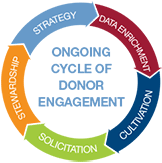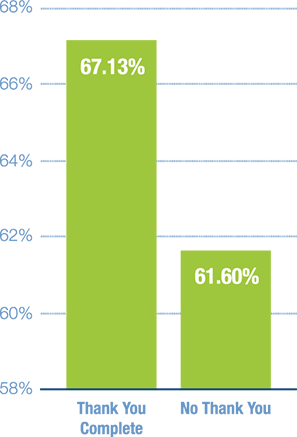fundraising
Cultivation and Stewardship Can Equal More Effective Solicitations
 “What can make our solicitations more effective?” is a question many organizations and individuals routinely ask of us about all fundraising channels, especially direct mail, email, and telefund.
“What can make our solicitations more effective?” is a question many organizations and individuals routinely ask of us about all fundraising channels, especially direct mail, email, and telefund.
One way for solicitations to generate more donors and dollars is to be sure your annual plan also incorporates a solid mix of cultivation and stewardship. As you can see in this graphic, cultivation and stewardship have a very tight relationship to solicitation.
When it comes to cultivation and stewardship, a couple of important statistics:
The 2010 Millennial Impact Report indicated that 86% of young donors want regular updates.
In the 2013 Convio, Edge Research, and Sea Change Strategies report, The Next Generation of American Giving, approximately 50% of Generation X donors born between 1965 and 1980 said that “the ability to directly see the impact of their donation would have a significant bearing on their decision to give.”
Why are GenX and Millennial donors important? Because those two generations will encompass the majority of any organization’s database. For higher education institutions, these two generations will encompass all alumni that graduated in the last 25-30 years.
Here are three specific items to consider ensuring are part of your cultivation and stewardship strategies:
1) Make thank you phone calls and/or mail thank you notes.
For the phone calls, this can be done through your normal telefund calling, personal staff calls, or consider using a 30-second broadcast voice message from a prominent member of your organization’s community. Thank you calls can have an impact on completed solicitation calls later in the year, especially for your first-time donors.

2) Develop cultivation and stewardship videos to distribute via email and social media channels to showcase past, current, and future impact of gifts.
Digital Sherpa reports that video increases the understanding of a product or service by 74%, which is a major component of cultivation and stewardship. In fact, simply including the word “video” in an email subject line has been known to increase email opens by 20%. Remember that videos don’t have to take months to develop. Many great videos can be filmed and edited on short notice using commonly available software.
3) Develop short informational pages about areas directly impacted by giving on your web site – and don’t forget to incorporate those videos.
Once you have these web pages, which should updated on a regular basis, you can use any number of channels to engage donors and prospects with this information in either a cultivation or stewardship message. This includes using postcards to direct mail specific segments of your database information on areas of the donor’s interest. As noted in an earlier blog post, postcards have a very high read rate.
As of June 2014, there are more than 1.4 million registered 501(c)(3) charitable organizations in the United States. With that much competition for the charitable dollar, the most successful charities are going to be the ones that fully engage their donors and prospects in the Ongoing Cycle of Engagement, including cultivation and stewardship.
Note: More information on stewardship can be found in the August 2014 RuffaloCODY white paper entitled “Stewardship: Creating Strategic Programs That Inspire Loyal Donors.”